A Wits graduate and long-time collaborator with David Krut Projects, Hobbs is also a Fellow of the Ampersand Foundation and the Leadership Forum Johannesburg and co-director of The Trinity Session – a transdisciplinary artist collective he co-founded with Marcus Neustetter in 2001. Through this initiative, Hobbs has led more than 600 public art and urban renewal projects across Joburg and beyond.
"I often think of my constructions as sculptural manifestos." – Stephen Hobbs
Apart from a stint in the United Kingdom in the late 70s and two years in Ireland in the early 2020s, Hobbs has always called Johannesburg home. It is here that his curious approach, which he describes as "working the city as my studio", thrives. It is a process that sees him navigating Joburg by car, mapping its suburbs, townships, and in-between spaces, and turning these observations into sculptural forms and spatial interventions.
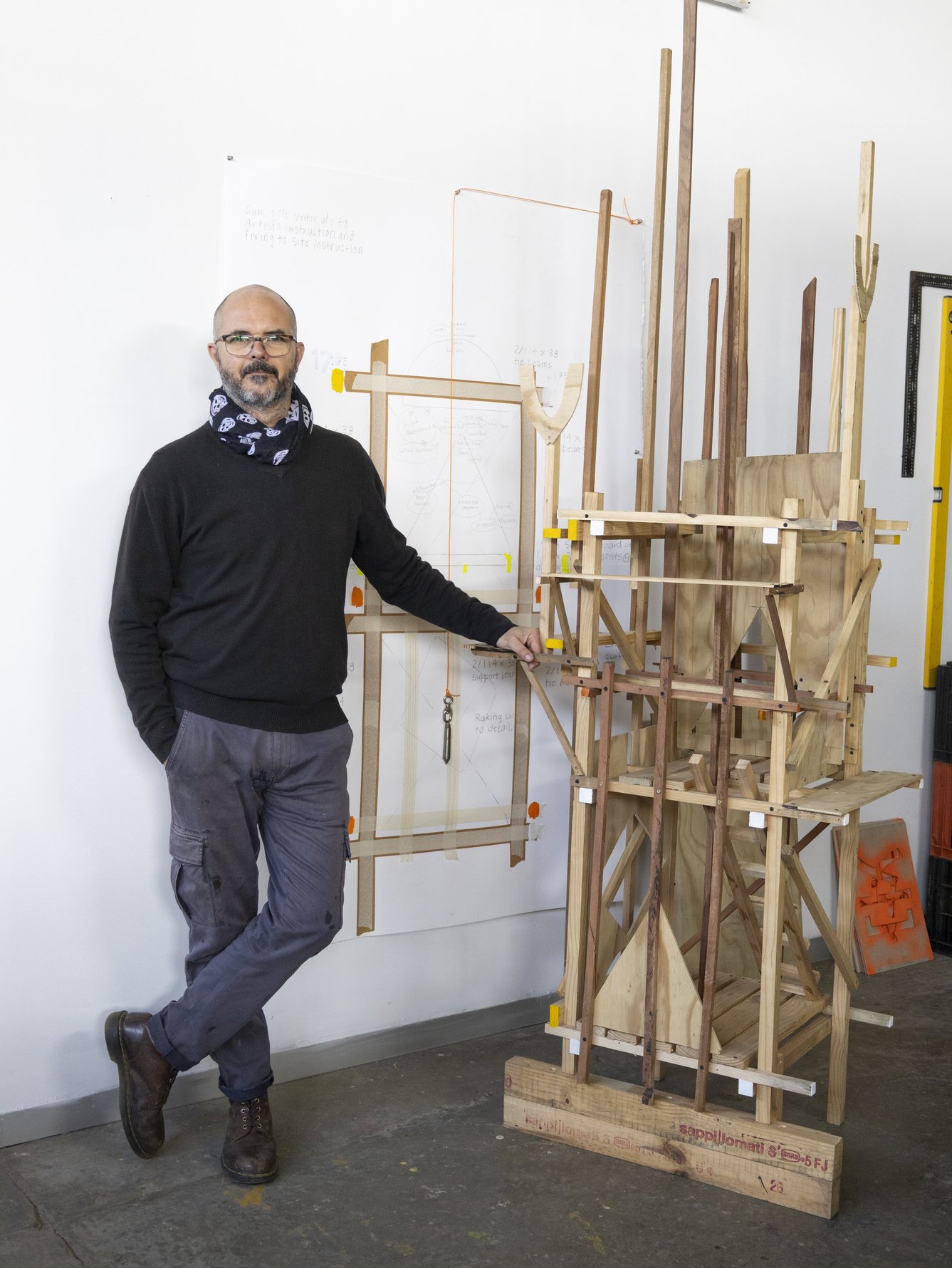
for JCAF's 2025 exhibition. Photo: Supplied.
At the Joburg Contemporary Art Foundation (JCAF), Hobbs' site-specific installation Mnara – Swahili for "tower" – stands as both a physical and conceptual gateway to the 2025 exhibition, Structures. Skeletal yet monumental, it evokes unfinished architectures that mirror Johannesburg's ongoing cycles of collapse and reconstruction. Mnara is also a testament to the artist's own body – its limitations, capabilities, and lifelong entanglement with medical technologies. Structures shows at JCAF until Sat, Nov 15, 2025. Book a guided walkabout of the exhibition.
We caught up with Hobbs to find out how this towering ode to scaffolding – and his largest work to date – came into being. He also shares his thoughts on place-making, the chaos of his daily routine, and why he's not a solitary artist.
When you think about the built environment in Joburg in particular, what sorts of things come to mind?
The ever-expanding profile of Sandton City. Empty billboard structures awaiting advertisements along the M2 and en route to OR Tambo International Airport. The Diamond Building overshadowing Diagonal Street and the clustering of traditional medicine shops. The sky framed by Ponte City’s inner core. Jeppestown, the hostels, that tiny fenced-in park next to Kwa Mai Mai with white stones, which one passes when on-ramping the Joe Slovo stretch to the M2 East and West.
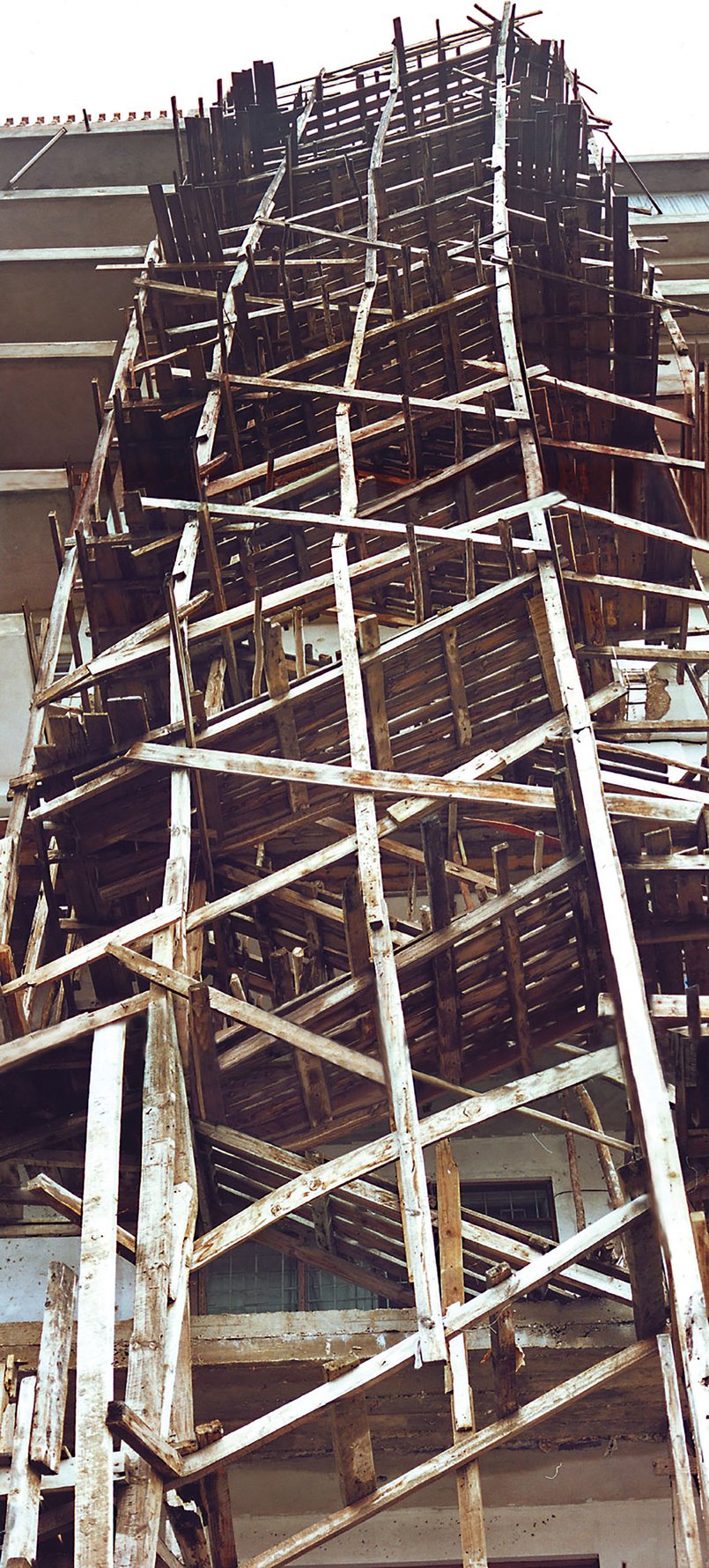
Photo: Stephen Hobbs.
This is the first outdoor installation JCAF has exhibited. Can you share some reflections on the process – from the idea to the installation?
On a research trip to Dar es Salaam in 2001, I was struck by an improvised wooden scaffold staircase spanning the vertical extent of my hotel. The level of ingenuity in the application of the found timber was spectacular. And while there was no sight of builders during my short stay, the structure itself spoke to a choreography of purpose animating the exterior of an otherwise average building. From that point onwards, I became fixated with incomplete architectures, structures laid bare, offering suggestions about the future of the landscape. But equally appealing as a kind of drawing in space.
Having travelled to a number of cities in Africa, I’ve built a photographic archive of all things construction-related, with a particular interest in abandoned sites. Over time, the photographic documentation process became predictable and unsatisfactory. I became increasingly drawn to my early childhood experiences of model-making and fumbling around with my hands. By the late 2000s, I was intentionally making constructions and models that encouraged the viewer to speculate on the form, purpose, and identity of these objects and the places they might occupy.
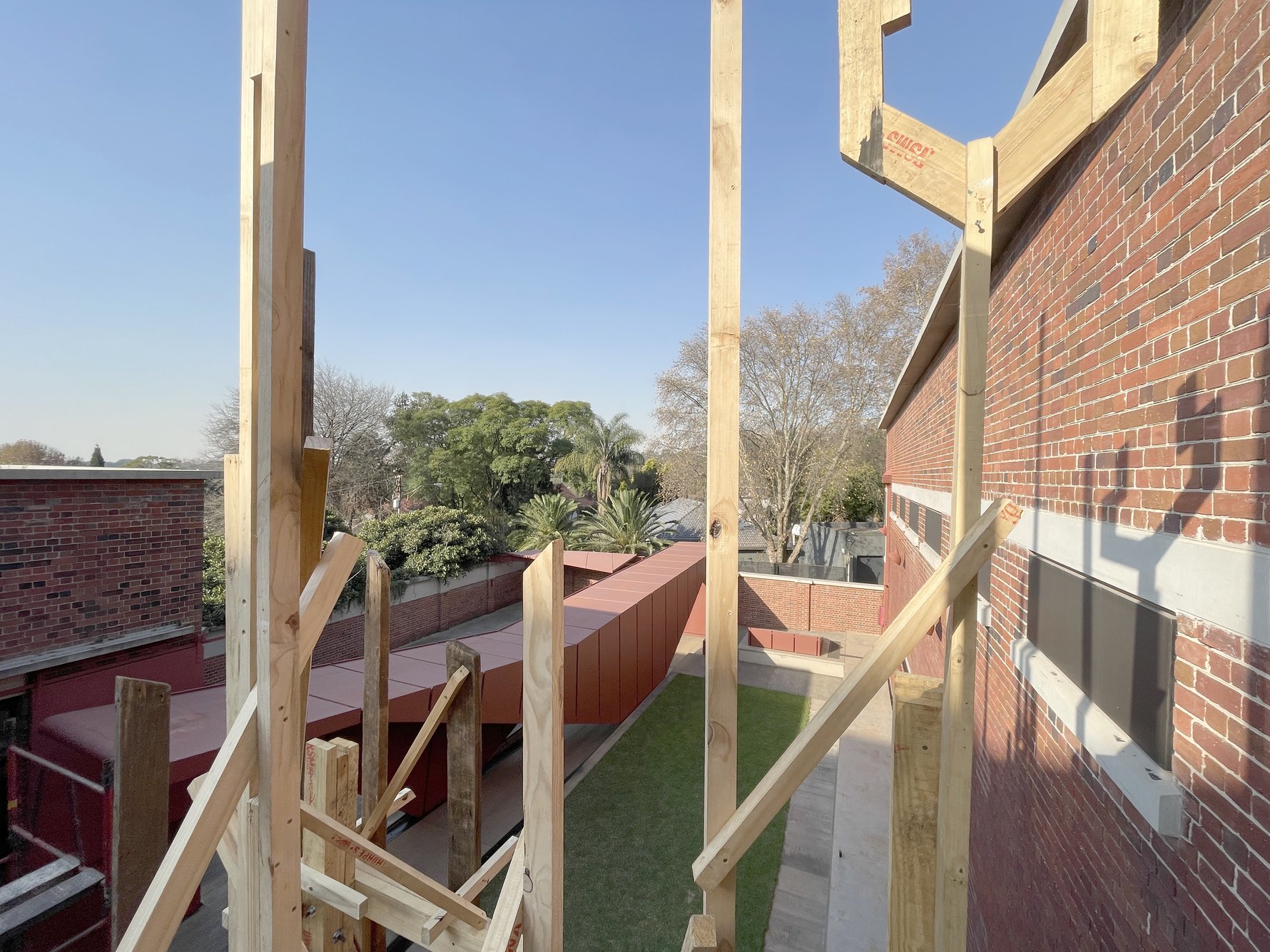
You made a charming remark, that your smaller sculptures were all created in the hopes that someone would see them and say, "I want that, but bigger." That's essentially what happened with your installation at JCAF. Tell us the story.
Indeed, what makes me particularly excited about the invitation to produce the Mnara installation is that it was the result of Clive Kellner [JCAF's executive director] seeing a variety of my constructions at my survey show at Wits Art Museum (WAM) in 2024. I often think of my constructions as sculptural manifestos, provocations for something bigger, more complex at the human scale. Hence, the opportunity to engineer a form like Mnara from an archive of construction sites and construction methods, relative to the initial model that attracted the invitation, feels like a mission accomplished.
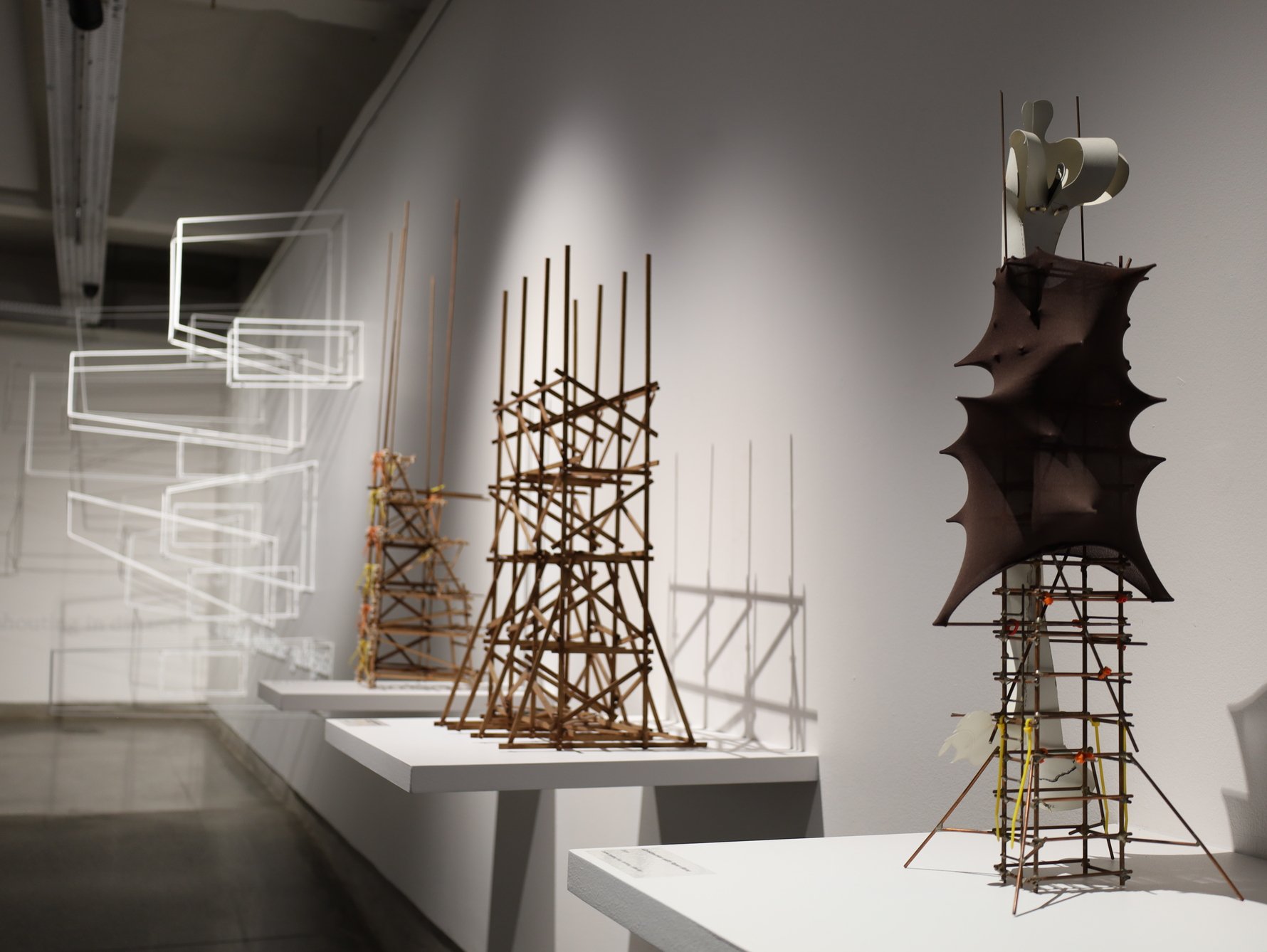
What was it like going from working on a relatively small scale to so large? Did anything about this surprise you?
A key part of my practice is to experience buildings in a physical way. The space they occupy, the vistas and perspectives afforded from different levels, whether by stairwell, fire escape or lift, and observing the way in which people repurpose their surroundings to their individual and collective needs. As I’m writing, I’m waiting to visit my mother in hospital, and I’m busy witnessing a physiotherapist monitoring her patient's motor skills as they perform various exercises up and down the stairwell.
The business of model-making comes with its own challenges, where fine motor skills are required for every cable tie and joint connection. Needless to say, one’s fingers take strain.
In the approach to scaling Mnara for its corner site at JCAF, there was much discussion about how far the tower should reach and this process required a full-on physical immersion in the construction process. Something I’d been dreaming about for a long time – to build and climb as you go. Ultimately, I was surprised by two things. One, that I had the stamina to build this thing alongside my significantly younger and fitter assistant Teboho Mofokeng, and two, that my lower back didn’t go into chronic spasm.
"I [am] fixated with incomplete architectures, structures laid bare offering suggestions about the future of the landscape." – Stephen Hobbs
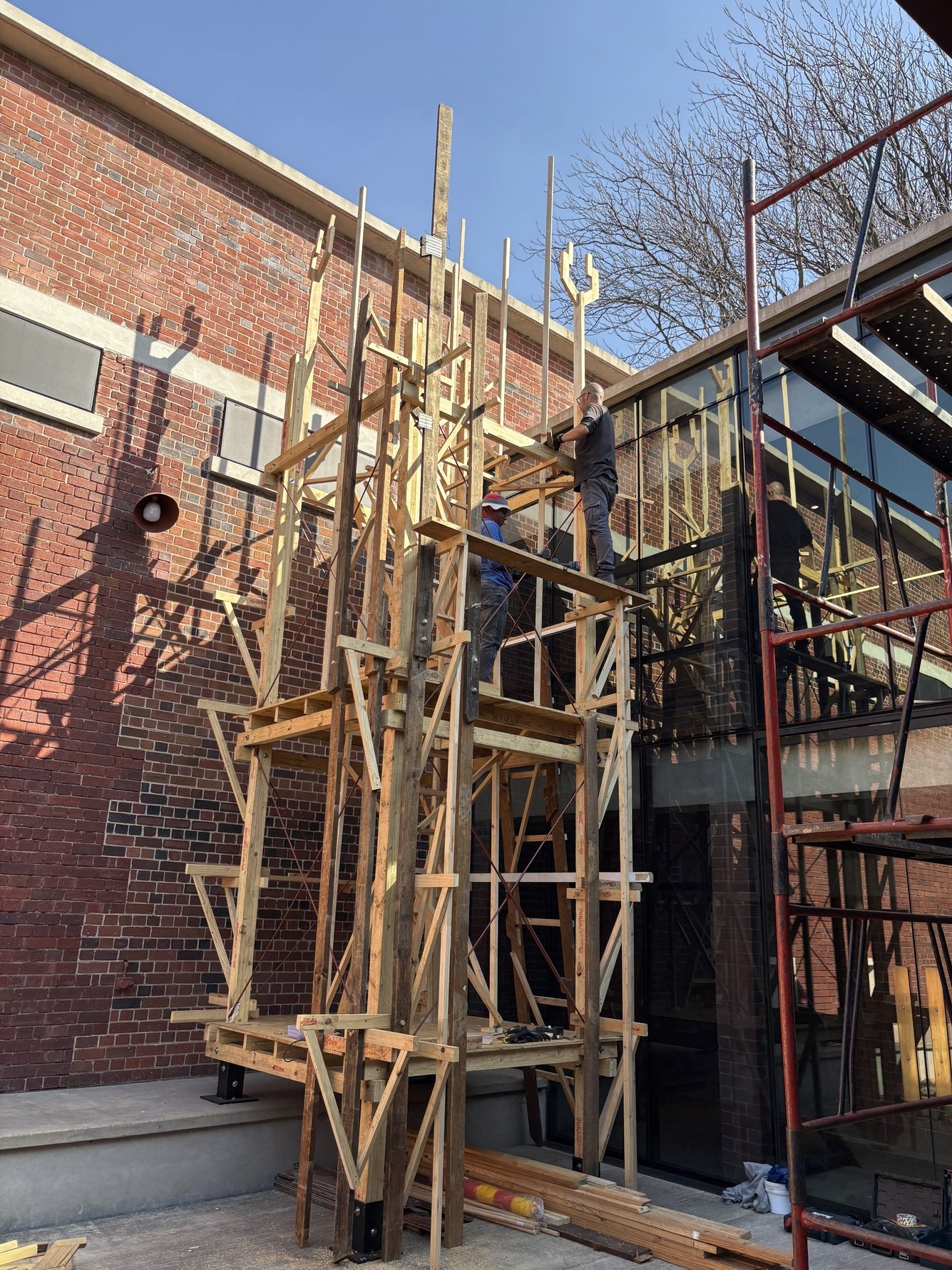
You likened scaffolding for structures to the kinds of "scaffolding" that our bodies require at times. It's an evocative comparison. Can you speak more to this?
From an early age, I have ‘enjoyed’ a life support system of sorts by way of a shunt that drains excess cerebrospinal fluid in order to avoid pressure build-up on the skull, brain damage, etc. This, complemented by many surgeries and a pinch of titanium in my right foot, has attuned me to a variety of technologies and machines that have served their purpose in the process of survival and recovery. Mnara, in this sense, is a personal celebration of my body’s capacity to fully immerse in the construction process. My version of an extreme sport.
We'd love to hear your thoughts on the Structures exhibition at JCAF more broadly. What are your impressions of this curatorial project?
I’m struck by the tensions between subtlety and monumentality in this exhibition, journeying through an immersion of poetic, mnemonic, and architectonic strategies amplified by theatrical lighting and the transformed spatial volumes the old tram shed offers, and of course, how the building itself is a playing character in the material and spatial discourse the exhibition explores. Within all of this is a curatorial thesis that will hopefully challenge audiences to reconsider history, memory, cultural identity, contingency, and innovation in design logics drawn from a non-Western sensibility – so rich and layered and in opposition to the imprint of modernism.
Do you have a story to share about a piece of architecture or a particular feature of the landscape or environment in the city that illustrates the profound effects of these aspects that can often fly under the radar of conscious thought?
There’s a song by the Red Hot Chilli Peppers that would come to mind on Oxford Road every time I drove under the highway, next to Hollard’s entrance. Driving the city, its suburbs, and surrounding townships has been a key function of my practice for decades. Over time, my various routes into and out of places have become overlaid with flashes of sounds and memories, hyper-narratives about place and placelessness, suspended in a mental map of geotagged place-making.
"Interaction and social engagement are an essential part of understanding how Joburg works." – Stephen Hobbs
What do you enjoy about JCAF's approach – from the curation to the way the exhibitions are opened up to visitors through guided tours?
There’s an intimacy and a grandness experienced all at once. And while the exhibitions are clearly the main focus, the parallel programming of related and divergent topics enriches the experience all the more. JCAF’s treatment of subject matter through both museological and contemporary art lenses is unique in this country, tucked away in the tree canopy of Forest Town. It feels like a special discovery every time you arrive.
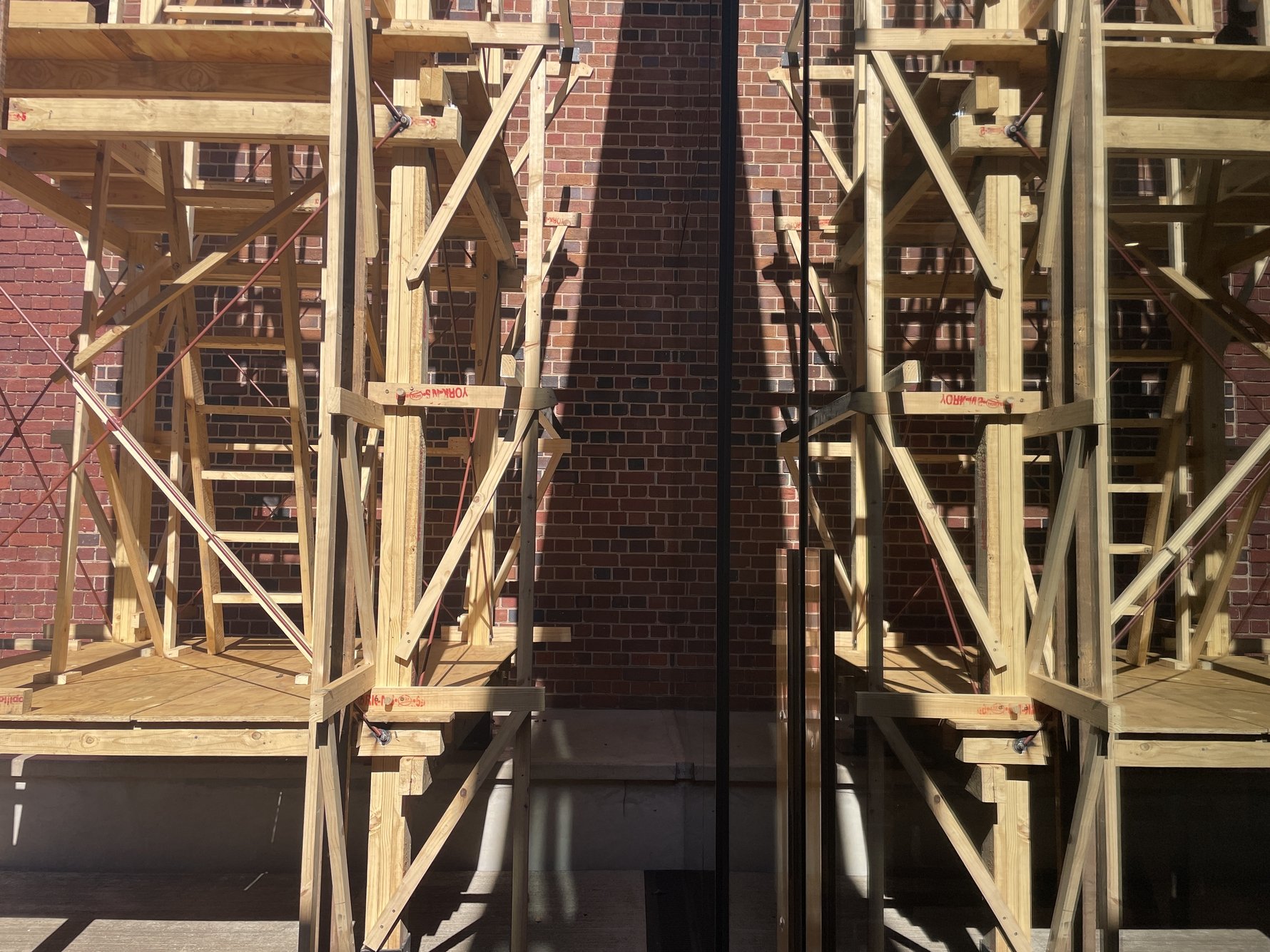
Do you have such a thing as a typical day? Take us through it.
The only thing that’s typical about my day, other than my early morning routine, is that my various projects, private and public, will tear me in opposite directions, from home studio to project sites to workshop and back to project sites. The cycle has been like this for years. There’s a kind of madness in it, caused by over-stimulation and overthinking the challenges this city and its people face on a daily basis. And this is work too, constantly making connections between people and places.
An urban seam has consistently run through your work over the years and been expressed in many different ways and mediums. What first evoked this interest?
Taking up the position of Market Theatre gallery manager in 1994, which required building an exhibition programme from scratch, and over six years, my yellow 1300 Citi Golf and I covered a lot of ground. My swan song at the Market Theatre in 2000 involved an ambitious gallery, museum, and public space project – Tour Guides of the Inner City – presented through shopfront, billboard, and mobile installations, performances, and so on. This gig was as much my homage to the city as it was to all the artists that required me to visit them and their work in often challenging spaces and conditions.
"[Joburgers] make connections, live and endure all the bullshit, and still have a positive angle on the potential of this place."
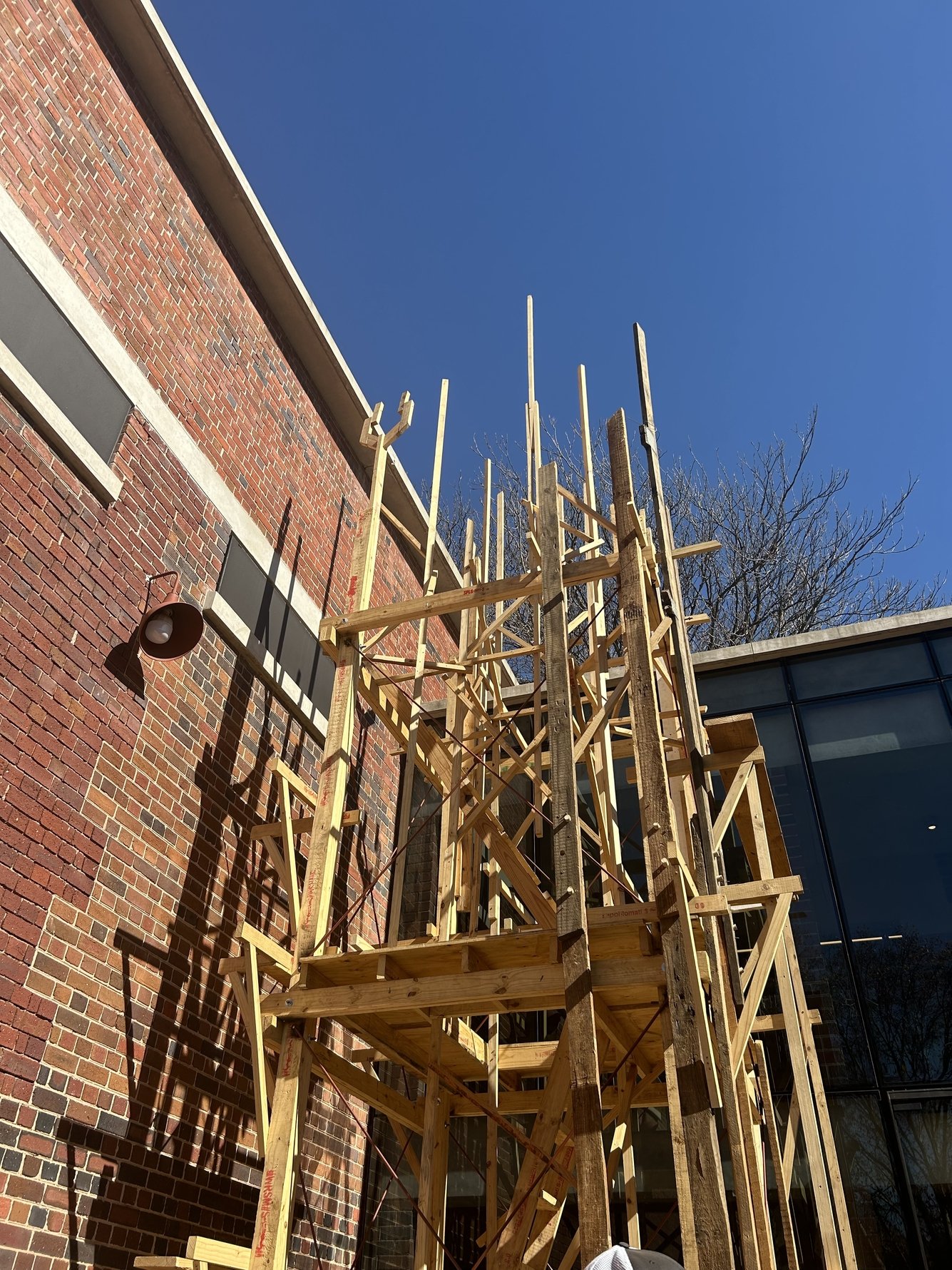
Part of your practice has always involved an aspect of performance. How do you navigate between these roles – the solitary artist at work and the performer engaging with an audience. If you could choose one, which would it be?
This is an interesting observation and, while I have indeed delivered a variety of performative interventions in public space and at my exhibitions, I think the real performance sits in my sociable nature. Interaction and social engagement are an essential part of understanding how Joburg works. To this end, any ‘performances’ to date have been a form of storytelling, where talking and demonstrating in paradoxical ways are essential tools in my communication process.
I truly admire ‘solitary’ artists. For me, it’s lonely, confusing, painful, and requires extra dimensions of focus and intent, and I have to balance it with my parallel work – consulting on public realm projects and working the city as my studio.
Where will your structure move after its time at JCAF is done? Or do you have plans to repurpose it?
Mnara was constructed in the main from materials used in previous installations and builds. When returned to my studio, the columns of timber will be neatly stacked until their next sense of purpose.
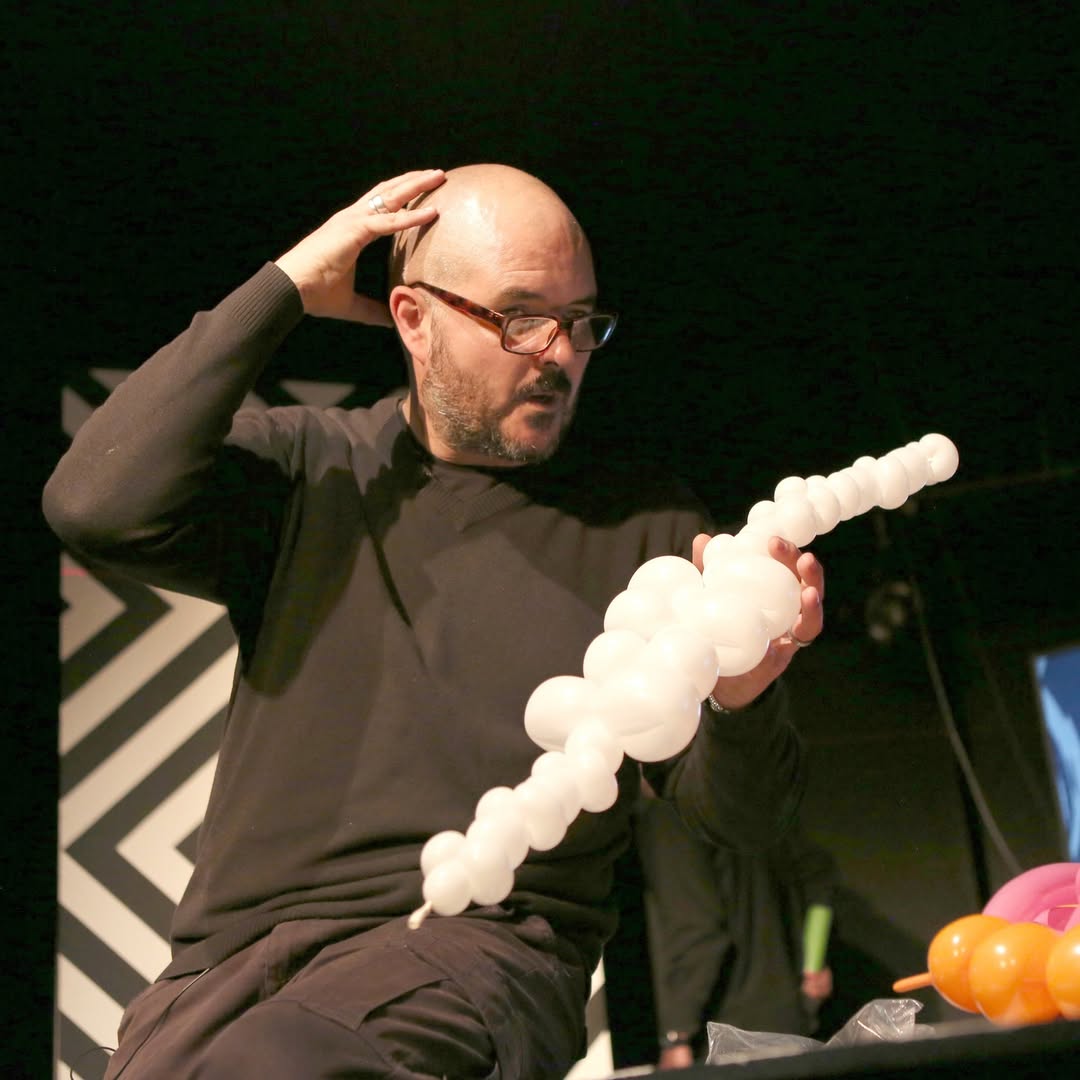
Rapid-fire round: Six questions about Joburg
What brought you to Joburg and what makes you stay?I was born here, lived in the UK in the late 70s, lived in Ireland in 2020 and 2021, and returned to Johannesburg, to my family, to my networks, to home – love it or hate it.
The most memorable meal you have eaten in the city?
It’s a toss-up between a Cape Dutch Dip with my dad at the Carlton Centre in 1982, takeout from Mi Vami in Hillbrow whilst hospitalised as a young boy, and a Nigerian dish during a food tasting competition in the 2010s.
What makes someone a Joburger?
Their capacity to make connections, to live and endure all the bullshit, and still have a positive angle on the potential of this place.
Your favourite Joburg suburb, and why you choose it?
We had two options when we returned from Ireland. Linden, where we currently live, comes out tops. It’s central and has retail streetscapes. And Cresta’s close, if I have to.
If you were Joburg's mayor for one day (average tenure), what would you change?
Safe access for children.
Joburg in three words.
Terrific Building Opportunity!
To see Hobbs' large-scale, site-specific installation Mnara, book a guided tour for JCAF's 2025 exhibition Structures – on show until Sat, Nov 15, 2025.


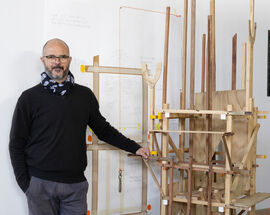
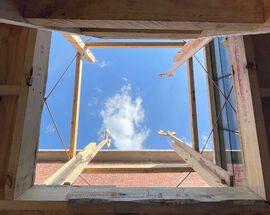
_m.jpg)


Comments